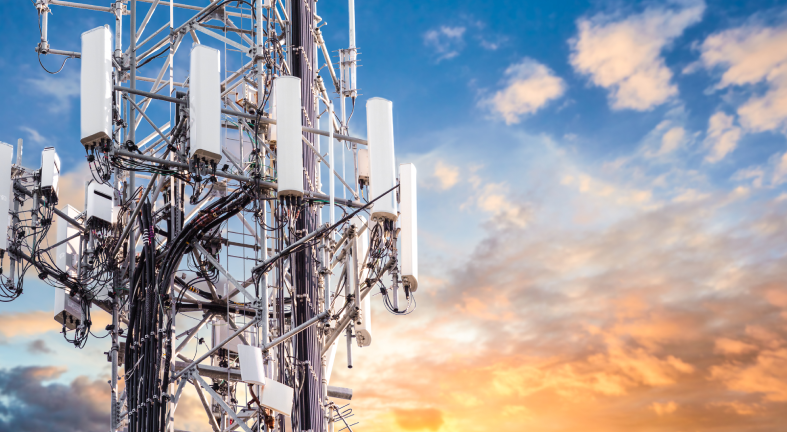
Over the last couple of years, we have seen the need for high-speed broadband on the rise, and due to this, investments in broadband infrastructure have been increasing nationwide. It may be hard to believe, especially with how far we’ve come with technology, but there are still millions of Americans who lack access to broadband internet, especially those living in rural and tribal areas. And the FCC’s fixed speed benchmark has been set at 25 Mbps for downloads and 3 Mbps for uploads, which many other areas have not yet been able to meet.[i] As a result, many states over the past few years, have drawn up plans that include millions of dollars in funding to improve speed and access to broadband, some of which have projects already underway. Now with the $1 trillion Infrastructure Bill (Infrastructure Investment and Jobs Act) that was passed in November of 2021, another $65 billion will be going toward broadband expansion across the U.S. to help reach these goals.
If you work in the broadband industry, be prepared for an influx of bidding opportunities that will be coming your way over the next several years.
Broadband Funding from The Infrastructure Bill
The $1 trillion Infrastructure Bill provides funding for a wide variety of industries that are struggling to keep up with today’s infrastructure standards. The funds provided by this bill will be used over the course of the next five to ten years. You may be wondering how that $65 billion will be distributed and what it will be used for. Although it’s not yet set in stone as to how much each state will receive in funding, what we do know is that the largest portion of the broadband funding, $42.45 billion, will be distributed by The National Telecommunications and Information Administration (NTIA) to states as part of the Broadband Equity, Access, and Deployment (BEAD) program.
Within this program each state will receive an initial $100 million to be used for broadband grants, but to receive additional funding they’ll need to submit a 5-year action plan to NTIA. This is the stage that many states are working on now and once they submit their plan, the additional funding will be awarded based on the number of unserved or high-cost areas of every state, which will be determined by the broadband coverage maps that will be updated and published by the FCC.[ii] There are also billions of dollars going toward other broadband initiatives including:
- $14.2 billion for an Affordable Connectivity Broadband Subsidy Program
- $2.75 billion for a Digital Equity Program
- $2 billion for a Tribal Broadband Connectivity Program
- $2 billion for the Rural Utilities Service Distance Learning, Telemedicine and Broadband Program
- $1 billion for a new Middle Mile Grant Program
(Source: Goovaerts, D. “Broadband gets $65 billion in U.S. infrastructure Bill – here's what happens next.” FierceTelecom.com, 8. Nov. 21)
As you can see there is a lot of money going toward various programs to help improve broadband access and as some of this funding starts being distributed in the coming months, many state and local agencies will be issuing new bidding opportunities looking to start work on these projects or services that your business can get involved in.
Current Broadband Funding
Aside from the Infrastructure Bill, many states are currently spending millions of dollars on broadband upgrades that result in new solicitations being issued every month. As part of the Broadband Infrastructure Program, NTIA recently awarded 13 grants totaling to more than $277 million which will be used to connect over 133,000 unserved households. The grants were awarded to 12 states and one territory including Georgia, Texas, Washington, Mississippi, North Carolina, and Pennsylvania to name a few.[iii]
We also can’t forget that under the American Rescue Plan Act of 2021, the Coronavirus Capital Projects Fund (CPF) provided $10 billion dollars to carry out critical capital projects that included broadband. Texas for example, received $500.4 million for broadband infrastructure projects and digital connectivity technology which are already in the works.[iv] Other states like New York had set aside $500 million in 2015 to help achieve statewide broadband access and recently announced a $1 billion ConnectALL initiative to transform the states digital infrastructure.[v] Michigan also has plans to spend $250 million to expand broadband in their recent infrastructure spending deal.[vi]
Many states across the U.S. are currently working on broadband projects as we speak, so there’s no need to wait to get in on these lucrative opportunities, start bidding now and once the Infrastructure Bill funding is distributed, you’ll start to see even more opportunities for your business.
Broadband Opportunities
One of the easiest ways to save time and money finding bids is by using a government bidding service like bidnet direct. You can start finding bids in a wide variety of industries, including broadband, at the federal, state, and local levels across the nation. You’ll also receive real-time bid alerts to your inbox daily with bids that match the products and services your business sells.
Everything from pre-bid information, to documents, to specifications will be provided to you, so you can get started writing your winning proposals as soon as possible. With broadband spending increasing, bidnet direct can help you stay on top of these opportunities. Here are some examples of bid opportunities that you can find instantly with bidnet direct:
- Broadband Construction Program – Vermont
- Community Wireless Network Services – California
- Rural Broadband Consultants Services – Oregon
- City Wide Fiber Project – Connecticut
- Broadband Network Deployment - Texas
- Countywide Broadband Internet – South Carolina
Always be one step ahead and keep an eye out for the bidding opportunities that align with your business. Start selling to the government and get a piece of this infrastructure funding that will deliver billions of dollars to help improve broadband connectivity across the U.S. With the help of bidnet direct your business can take on these projects and service requests which in turn, will help improve the overall state of our nation’s infrastructure.
Andrea Cortina | bidnet direct
Find your next government contract!
[i] Campbell, S., Castro, J. R., & Wessel, D. “The Benefits and Costs of Broadband Expansion.” Brookings.edu, 9. Nov. 21
[ii] Smith, C., & Blumgart, J. “Infrastructure and Broadband - What to Watch in 2022.” Governing.com, 27. Jan. 22
[iii] U.S. Department of Commerce. “Department of Commerce's NTIA Awards $277M in grants to expand broadband infrastructure.” commerce.gov, 25. Feb. 22
[iv] Texas Broadband Development Office. Funding Resources | State Funding | Broadband Development Account. comptroller.texas.gov.
[v] “Governor Hochul Announces New $1 Billion 'ConnectALL' Initiative to Bring Affordable Broadband to Millions of New Yorkers.” governor.ny.gov, 5. Jan. 22
[vi] LeBlanc, B. “The $4.8B Michigan Spending Deal Includes Broadband.” GovTech.com, 24. Mar. 22


